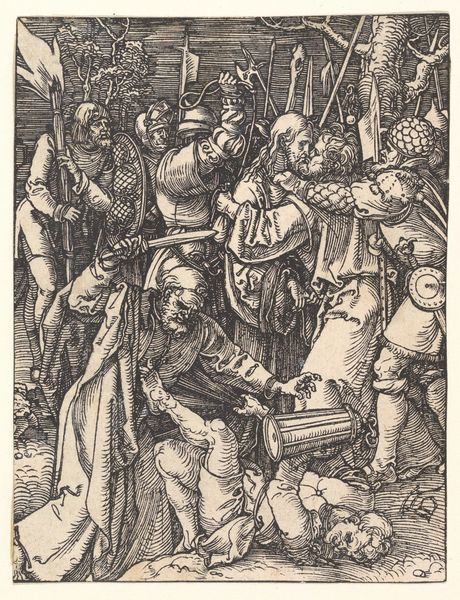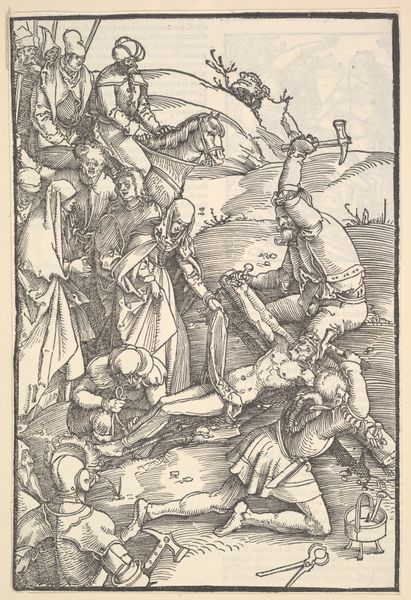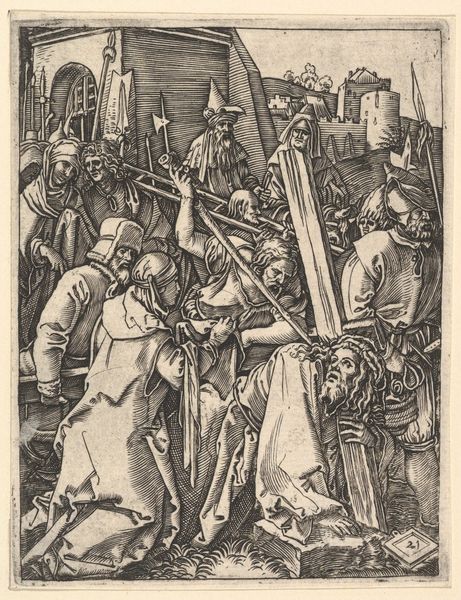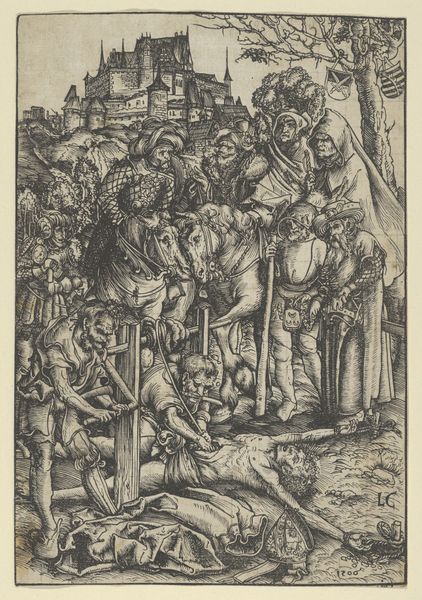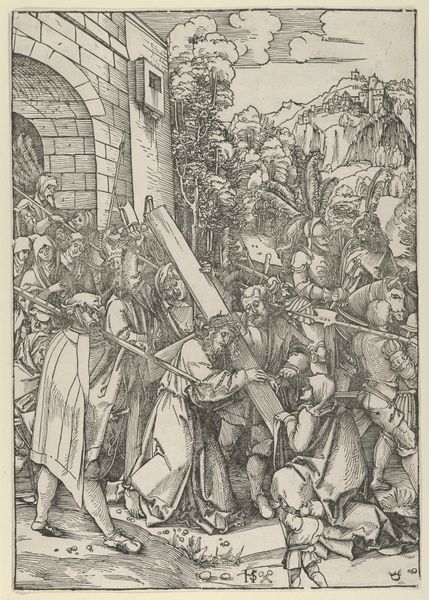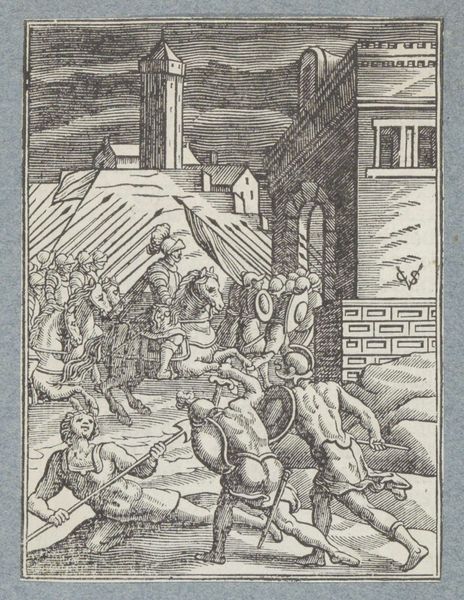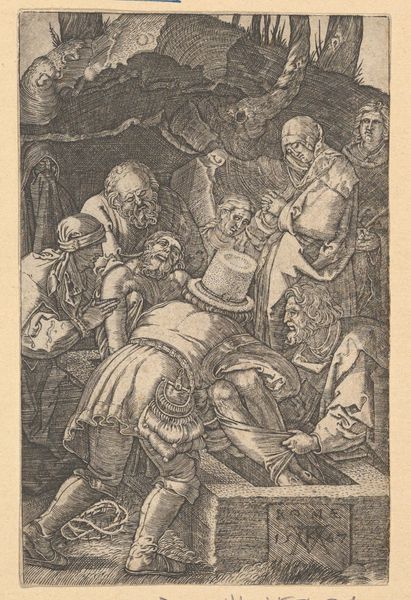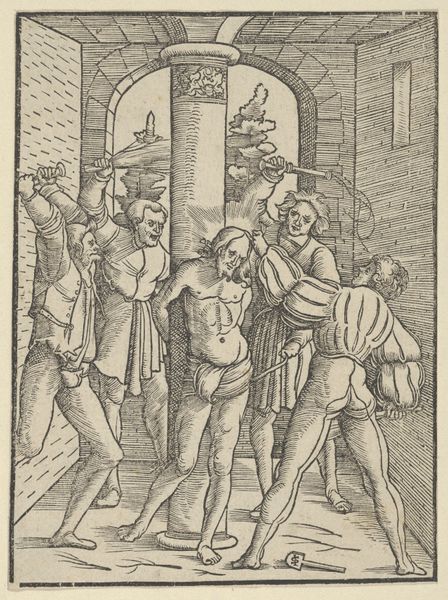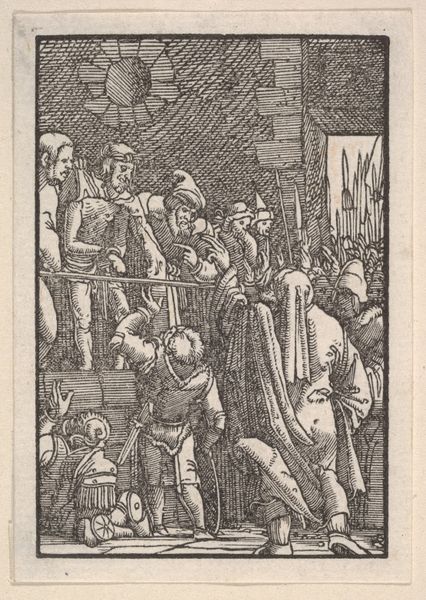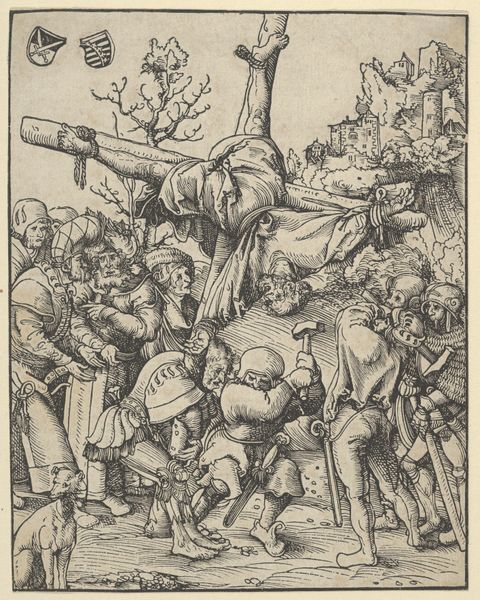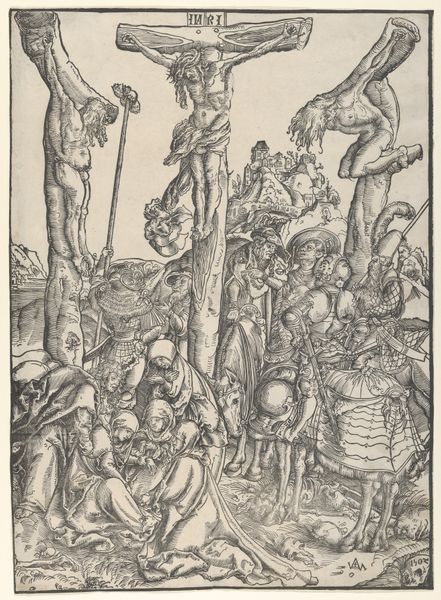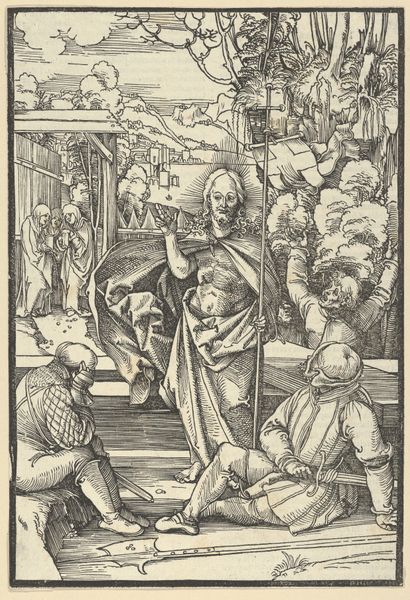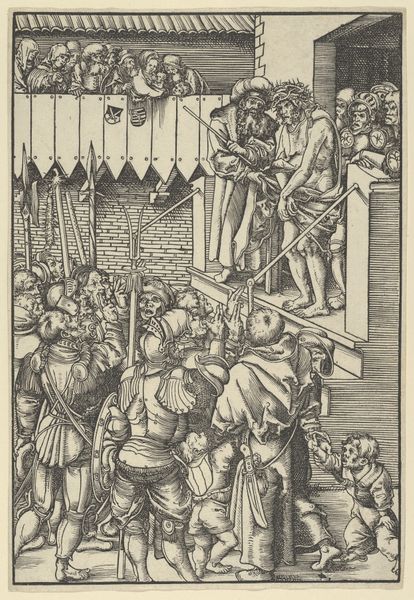
The Bearing of the Cross, from Speculum passionis domini nostri Ihesu Christi 1507
0:00
0:00
drawing, print, woodcut
#
drawing
#
narrative-art
#
pen drawing
# print
#
figuration
#
woodcut
#
history-painting
#
northern-renaissance
#
christ
Dimensions: Sheet: 9 1/4 × 6 5/16 in. (23.5 × 16 cm)
Copyright: Public Domain
Curator: This intense scene is "The Bearing of the Cross" by Hans Schäufelein, a woodcut from 1507, part of his "Speculum passionis domini nostri Ihesu Christi." Editor: It’s arresting. The stark contrast gives it such weight, such a… a physical feeling of oppression. It’s all angular elbows and jostling bodies. Curator: Absolutely. Schäufelein, working in the Northern Renaissance style, masterfully uses the medium to convey both chaos and profound suffering. You feel the weight of the cross, and Christ's agony is almost palpable. The textures he achieves with the woodcut technique – so rough and immediate – enhance that feeling. Editor: You can almost smell the wood, can’t you? And the density of bodies! It feels almost deliberately… clumsy. The woodcut as a popular medium really speaks to the democratization of religious imagery at the time. Were these widely available? Curator: Very much so. Prints like this were more accessible than paintings, enabling wider audiences to contemplate these religious narratives. What strikes me is how Schäufelein deviates from earlier depictions. His Christ isn't some ethereal figure; he's a man struggling under immense weight. Editor: Precisely. The material context changes everything. Suddenly, the divine becomes intensely human, made accessible not just through the image but through its production. It shifts our focus from theological contemplation to the physical reality, the social ramifications, the labour of suffering itself. Curator: It’s that gritty humanity, I think, that draws me in. There’s such an honesty here, stripped bare in black and white. And if you zoom into the faces of the mob around Christ – they're a mix of cruelty, indifference, fear, that resonate so strongly. Editor: They remind me, in their chaotic formation, of something caught in a churning mill – pressed and ground, just as Christ himself is. It's about understanding that suffering in terms of tangible pressures – in economics, in faith and even in the mechanics of image-making. Curator: You know, contemplating the material conditions through which suffering is communicated really enhances how the soul grapples with empathy. It underscores the humanity – both divine and fallen – embedded in this artwork. Editor: Well, seeing the labor makes me value the story a little more, not less. I am grateful, at the end of the day, for an artist, a medium and a story like this, willing to expose us all.
Comments
No comments
Be the first to comment and join the conversation on the ultimate creative platform.
